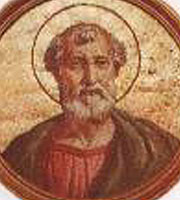St. Sixtus's Church (Greentown): Difference between revisions
mNo edit summary |
|||
| Line 7: | Line 7: | ||
NE_location=[[Lush Lane]]|NE_color=Street| | NE_location=[[Lush Lane]]|NE_color=Street| | ||
W_location=[[Mounty Bank]]|W_color=Bank| | W_location=[[Mounty Bank]]|W_color=Bank| | ||
This_location=St. Sixtus's Church|suburb_color=Church| | This_location=[[St. Sixtus's Church (Greentown)|St. Sixtus's Church]]|suburb_color=Church| | ||
E_location=[[the Colyer Monument]]|E_color=Monument| | E_location=[[the Colyer Monument]]|E_color=Monument| | ||
SW_location=[[the Becky Building]]|SW_color=Building| | SW_location=[[the Becky Building]]|SW_color=Building| | ||
Revision as of 14:08, 21 November 2009
| St. Sixtus's Church
Greentown [38,72]
Basic Info:
|
There are two locations named St. Sixtus's Church in the city of Malton. This article is about the one in Greentown.
St. Sixtus's Church [38,72] is located in the northeastern section of Greentown.
Description
Inside
You are inside St Sixtus's Church.
Outside
You are standing outside St Sixtus's Church, a derelict metal-and-glass building riddled with bullet holes.
Barricading Policy
Because churches in Greentown are considered entry points, it should be barricaded to Very Strongly Barricaded +2. In the case that the suburb is yellow or worse then this building should be moved to EHB until the zombies have left the suburb --Montana8 09:28, 20 February 2009 (UTC)
Tactical Resource Points
The nearest of each type of tactical resource point to St. Sixtus's Church:
- Nearest Hospital is 2 blocks away - St. Matheos's Hospital at [40,73].
- Nearest Mall is 9 blocks away - Marven Mall at [29,76].
- Nearest NecroTech Building is 3 blocks away - The Foreman Building at [39,69].
- Nearest Police Department is 2 blocks away - Rounds Boulevard Police Department at [38,70].
History and Significance
Greentown's formally designated revive point is the cemetery south of the church at [38,73], should be protected as such under the Sacred Ground Policy. This is the only cemetery in the suburb.
Of the six churches in Greentown, this is the only church in the north or east portions of the suburb, the remainder are concentrated in the south and southwest.
Pope St. Sixtus II
There are three saints called Sixtus; this church is likely dedicated to Pope St. Sixtus II, who was martyred in 258 CE during the persecutions of the Roman Emperor Valerian. Sixtus II is perhaps best known for mending relations between the Church in Rome and churches in Africa and Asia Minor, which had been strained to the breaking point by controversy over baptisms performed by heretics and the baptism of heretics. Although he was able to make peace with the foreign churches, however, and although he stated publicly that the faith of the baptized should be judged on his own desire and actions rather than the circumstances of his baptism, Sixtus insisted that Roman churches continue to refuse to baptize heretics and those the heretics themselves baptized.
The pontificate of Sixtus II lasted slightly less than a year. The Emperor Valerian had already mandated the worship of Roman gods and outlawed the practice of Christian ritual on pain of exile or death. Early in August 258, he went a step further and ordered the immediate execution of all Christian bishops and priests. On August 6, Sixtus II became one of the first victims of the new edict, he and six of his leading deacons were arrested as he addressed his congregation in the cemetery of St. Prætextatus and beheaded there the same day.
As much fallacy as fact surrounds Sixtus’s life and death. For centuries he was erroneously credited as the author of the Sentences (also called The Ring of Sixtus), although they were actually written by a Greek philosopher and disciple of Pythagoras, and the Ad Novatianum. (The former misattribution is likely also the cause of the once-widely-held misconception that Sixtus was Greek.) The poet Prudentius wrote in his Peristephanon that Sixtus was martyred on a cross; modern scholars have postulated, however, that Prudentius may have meant to use the Latin word cruci to refer to martyrdom in general.
Pope St. Sixtus I, martyred in 127 CE, is credited with creating portions of the Liturgy still in use today. Pope St. Sixtus III, a contemporary and frequent correspondent of St. Augustine of Hippo, was a Fifth Century denouncer of heretics and champion of papal supremacy over local bishops.
